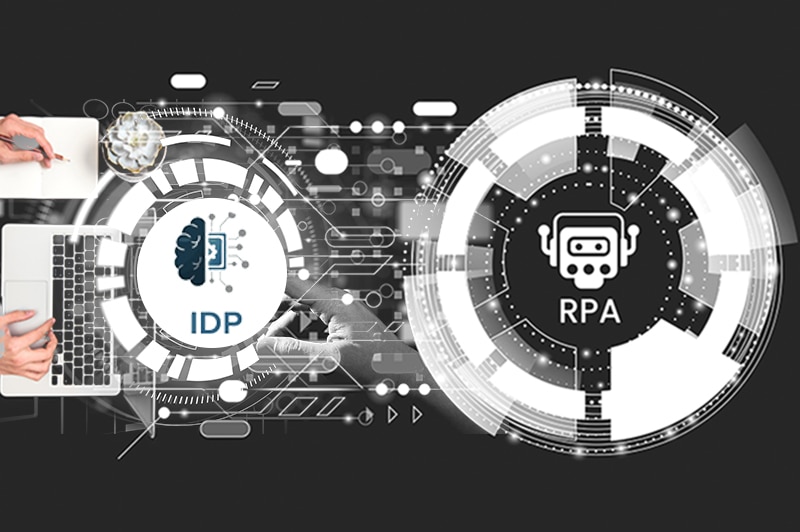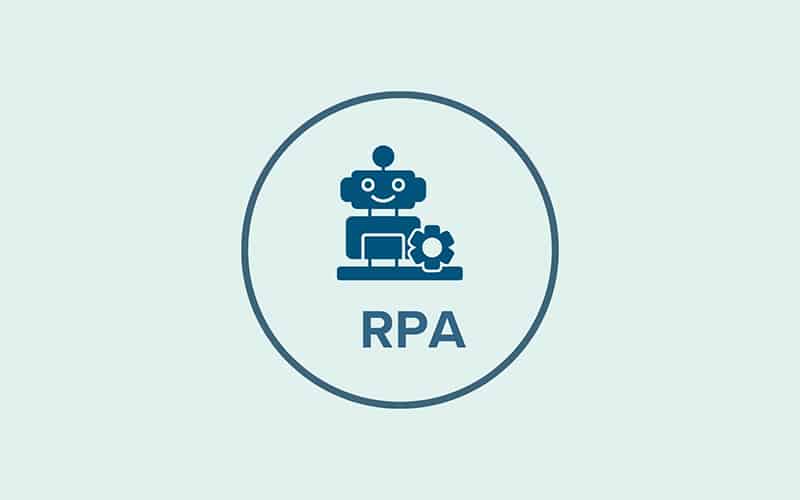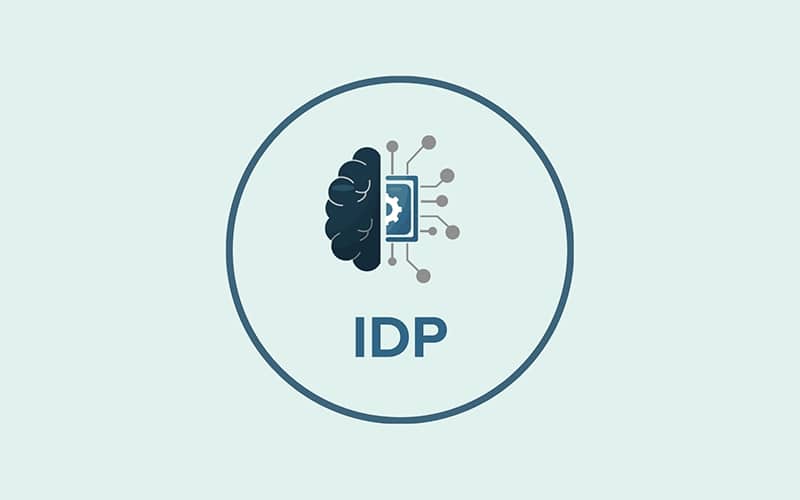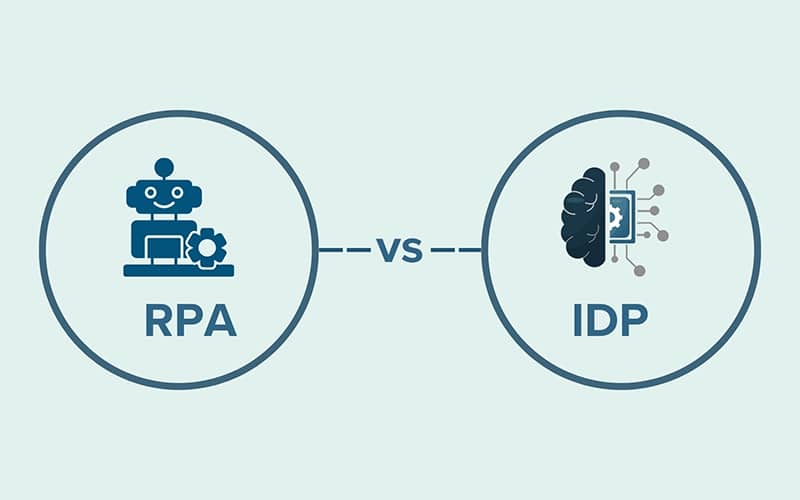The rise of automation in business processes, fuelled by advancements in technology, marks a transformative shift in how organizations operate and manage their workflows. These tools enable businesses to comprehensively manage vital resources such as personnel, applications, and systems. Robotic process automation (RPA) and intelligent document processing (IDP) are two prominent automation technologies for driving efficiency and digital transformation. Outsourcing solutions are available to leverage these automation solutions to enhance resource allocation, respond swiftly to changing market conditions, meet customer demands, and stay competitive.
Choosing the right technology that meets your unique needs is crucial to drive growth. Let’s explore the key considerations involved in making the right choice.
What is Robotic Process Automation?
RPA, or Robotic Process Automation, is a technology that uses software robots (also known as bots) to automate repetitive tasks and processes. These bots are like virtual assistants that can mimic human actions on a computer system, such as opening applications, entering data, clicking buttons, and performing calculations. These RPA bots can complete manual tasks more swiftly and on a larger scale than human workers. Unlike humans, RPA technology doesn’t tire, become distracted, or lose interest in repetitive tasks, thereby lowering the risk of errors.
In offices, RPA automates over-repetitive and rule-based tasks like data entry, report generation, invoice processing, and customer support. These are just a few of the many applications of RPA.
The top benefits of RPA include:
- Eliminates error-prone manual tasks
- Saves time — performs repetitive tasks quickly and accurately
- Improves worker productivity
- Boosts operational efficiency
- Overcomes staffing shortages
- Frees up workers to focus on higher value activities
- Results in better compliance
- Easily scales with your business and increases resilience
RPA can automate a wide range of tasks across diverse industries, ranging from banking and healthcare to retail and manufacturing. A study by MarketWatch predicted that the global Robotic Process Automation (RPA) market size, which was valued at $3,758.53 million in 2022, is expected to expand at a CAGR of 24.31% during the forecast period and touch $13,871.72 million by 2028.
Coming to real world examples of RPA applications, consider that every mundane, repetitive task across all processes and workflows in every department of every type of business: each presents a potential use case for RPA.
Banks and financial institutions leverage RPA for automating tasks such as account openings, loan origination, and KYC (Know Your Customer) compliance. Additionally, RPA finds utility in processing transactions and reconciling accounts within these sectors.
RPA has brought about a radical change in the healthcare industry. It automates administrative tasks like appointment scheduling, patient registration, and claims processing, along with data entry, validation, and analysis. By integrating data from various sources like EHRs, billing systems, and laboratory information systems, RPA helps healthcare organizations make better decisions and improve patient care.
RPA is most effective when applied to rule-based, predictable processes. It is excellent for optimizing workflows and reducing manual effort. But when it comes to handling document-centric processes where understanding and extracting data accurately is crucial, IDP offers the solution.
Understanding Intelligent Document Processing (IDP)
According to analysts, 80% to 90% of all data is unstructured. Unstructured documents include formats such as PDFs, scanned images, emails, contracts, invoices, and other textual or visual content. For instance, forms and emails often contain unstructured data such as customer inquiries, feedback, or order details, which may not follow a standardized template.
While RPA cannot process unstructured data, Intelligent Document Processing (IDP) systems can. IDP uses artificial intelligence (AI) and machine learning (ML) technologies to automate document handling, extraction, and analysis of data from unstructured documents. IDP systems use optical character recognition (OCR) and other techniques to convert scanned documents or images into machine-readable text. Once this is done, IDP systems use AI and ML algorithms to identify and extract relevant data fields.
IDP is particularly well-suited for automating invoice processing workflows. IDP can automatically extract information such as vendor name, invoice number, due date, and line item details. It can validate the extracted data against predefined rules. This allows organizations to process large volumes of documents correctly and quickly.
Another use case of IDP is automation of contract management. It extracts crucial information from contracts, including parties, dates, terms, payments, and deliverables, and classifies contracts, organizes data, and populates contract management systems or databases.
Differentiating RPA and IDP
To choose the right option for your business, you need to understand the core differences between RPA and IDP.
| Features and Capabilities | RPA | IDP |
|---|---|---|
| Scope and Focus | Focuses on automating repetitive and rule-based business processes, does not have native AI intelligence | Focuses on automating document-centric processes, i.e., automates extraction and analysis of information from unstructured documents |
| Input Source | Can handle various input sources, including user interfaces, APIs, databases, and structured data formats, interacting with apps in a similar way as human users would | Uses OCR and other techniques to extract text and data from unstructured document formats such as PDFs, scanned images, and emails. documents |
| Data Processing | Mainly focuses on the execution of tasks within applications, but may not have NLP or data extraction abilities | Utilizes AI and ML algorithms to understand the content of documents, extract relevant data fields and performs sentiment analysis and language translation |
RPA or IDP – Making the Right Choice for Your Business
The basic difference between these technologies is that RPA can only handle tasks that do not involve intelligent decision-making. On the other hand, IDP takes automation to the next level, by automating documents, understanding the information in them, making data actionable.
Often, it’s not about making a choice between these advanced technologies but about identifying situations where they would be the ideal option. So, it you simply need to automate manual tasks, RPA is the best solution. On the other hand, if you need to automate documents and extract insights from unstructured data, consider implementing IDP. For maximum automation potential, many organizations are adopting hybrid approaches that combine RPA and IDP.
To choose the suitable option for your needs:
- Assess your business needs, goals, and existing processes
- Evaluate the complexity and volume of the tasks to be automated
- Consider the compatibility of the technology with your existing systems and IT infrastructure
- Perform cost-benefit analysis and calculate return on investment (ROI)
A technologically advanced business process outsourcing company can help you leverage automation solutions based on your needs and requirements, enabling you to optimize business processes, increase productivity, and fuel growth.
Take the first step towards boosting efficiency and driving digital transformation with our advanced BPO solutions.







